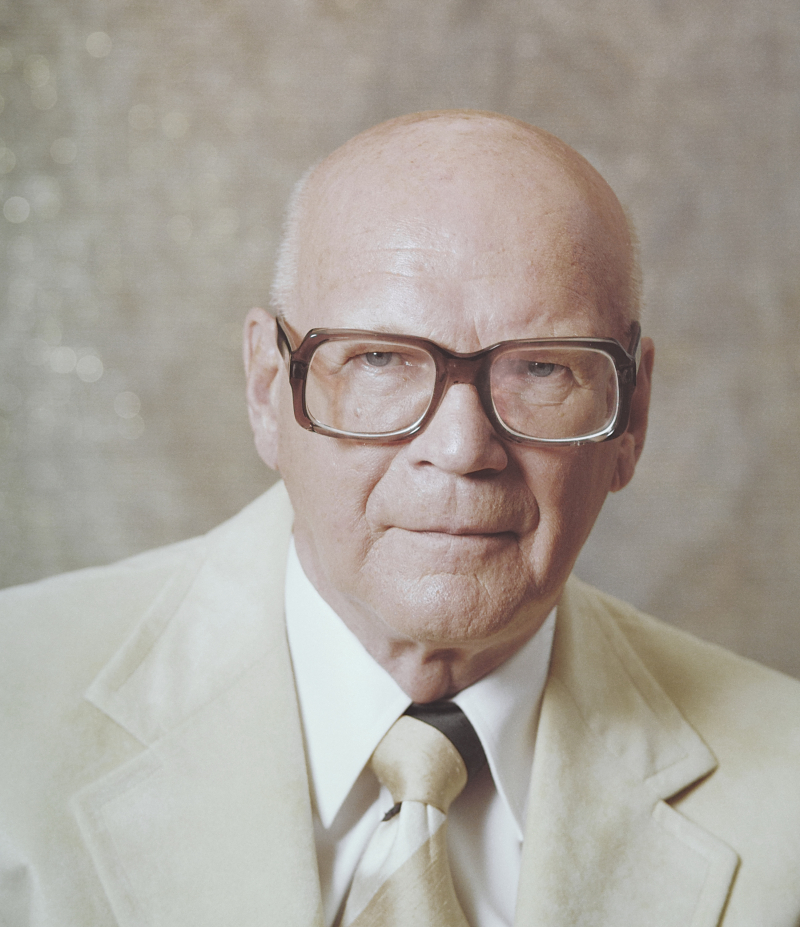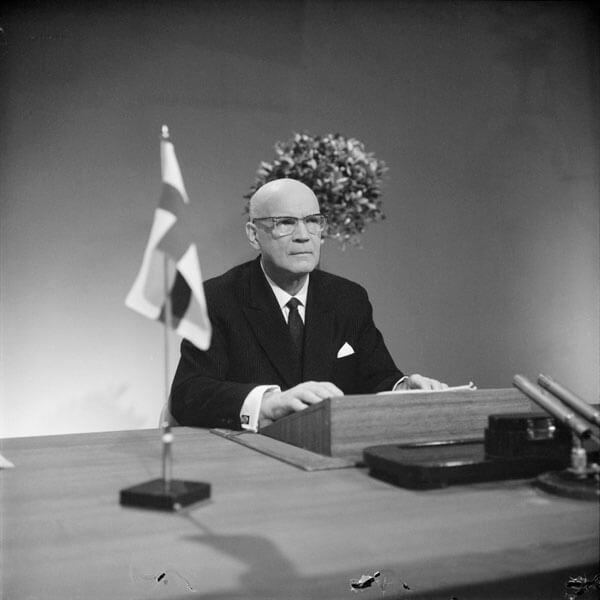Urho Kaleva Kekkonen
Urho Kaleva Kekkonen (September 3, 1900 – August 31, 1986) was a Finnish politician who served as Finland's eighth and longest-serving president from 1956 to 1982. He was also Prime Minister of Finland (1950-1953, 1954-1956) and held several other cabinet positions. He was the Agrarian League/Centre Party's third and most recent president. He was the head of state for approximately 26 years and dominated Finnish politics for 31 years in total. He held a great deal of power and won his later elections with little opposition, earning him the label of an autocrat. Nonetheless, he is a well-known person.
As president, Kekkonen continued his predecessor President Juho Kusti Paasikivi's "active neutrality" policy, which became known as the Paasikivi-Kekkonen doctrine, under which Finland maintained its independence while maintaining good relations and extensive trade with members of both NATO and the Warsaw Pact. Critical writers derisively referred to this appeasing policy as Finlandization. In 1975, he convened the Conference on Security and Cooperation in Europe in Helsinki and was considered a possible Nobel Peace Prize candidate that year. His diplomatic and trade policies are acknowledged by Finnish historians for allowing Finland's market economy to keep pace with Western Europe, even with the Soviet Union as a neighbor, and enabled Finland to eventually participate in the European integration process. On the other hand, his perceived desire for power, his divide-and-rule approach in domestic politics, and the lack of true political opposition, particularly in the latter part of his presidency, greatly undermined Finnish democracy. Following Kekkonen's administration, his successors started a constitutional reform to expand the power of the Parliament and Prime Minister at the expense of the President.
Before becoming President, Kekkonen served as Foreign Minister (1952-53, 1954), Speaker of the Finnish Parliament (1948-50), Minister of Justice (1936-37, 1944-46, 1951), and Minister of the Interior (1936-37, 1944-46, 1951). (1937–1939, 1950–1951). In addition to his vast political career, he was an athlete in his childhood, a veteran of the Finnish Civil War, and an avid writer who, even during his presidency, wrote amusing, casual articles for the Suomen Kuvalehti magazine under numerous pseudonyms.









